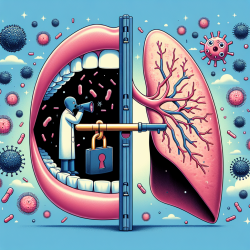As practitioners dedicated to improving outcomes for children, we must remain vigilant about emerging threats to public health. One such threat is zoonotic diseases—diseases that jump from animals to humans. Recent research, as detailed in the article The future of zoonotic risk prediction, offers critical insights that can help us stay ahead of these threats.
Here are key takeaways from the research and how you can apply them to your practice:
1. Embrace Data-Driven Decision Making
The study highlights the power of machine learning and data-driven models in predicting zoonotic risks. These models analyze vast datasets to identify potential zoonotic viruses before they become a public health crisis. By integrating data-driven approaches into your practice, you can make more informed decisions about the health and safety of the children you serve.
2. Advocate for Open Data Sharing
Open data is crucial for the development of accurate predictive models. Encourage your organization and peers to participate in data-sharing initiatives. The more data available, the better the models can predict and prevent zoonotic outbreaks, ultimately safeguarding the communities you work with.
3. Foster Interdisciplinary Collaboration
Effective zoonotic risk prediction requires collaboration across various fields, including virology, ecology, and public health. Engage with professionals from these disciplines to stay updated on the latest developments and incorporate their insights into your practice. Interdisciplinary collaboration can lead to innovative solutions that enhance child health outcomes.
4. Focus on Equity and Accessibility
The research underscores the importance of equitable access to zoonotic risk technologies. Advocate for policies and practices that ensure all communities, especially underserved ones, benefit from these advancements. By promoting equity, you help create a safer and healthier environment for all children.
5. Stay Informed and Educate Others
Knowledge is power. Stay informed about the latest research and developments in zoonotic risk prediction. Share this knowledge with your colleagues, schools, and communities to raise awareness and foster a proactive approach to public health threats.
By implementing these strategies, you can enhance your practice and contribute to a healthier future for children. For a deeper dive into the research, please follow this link: The future of zoonotic risk prediction.










